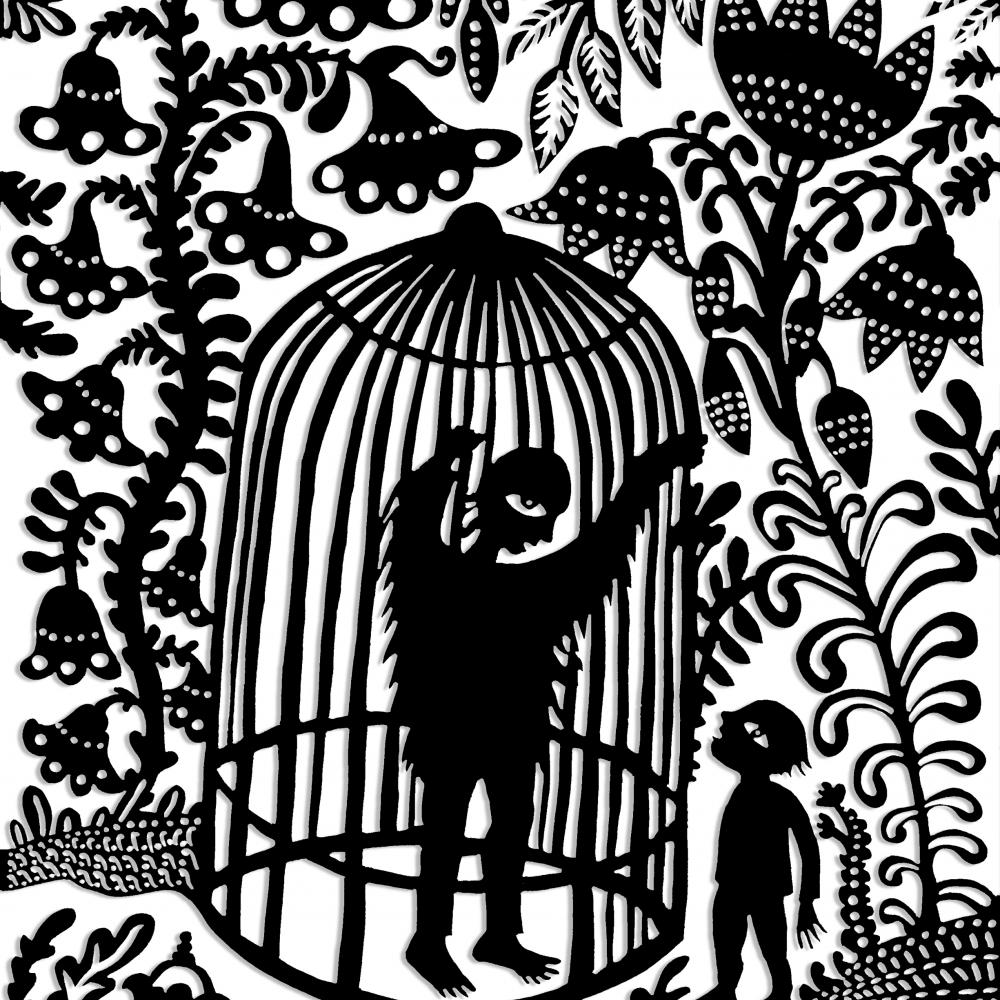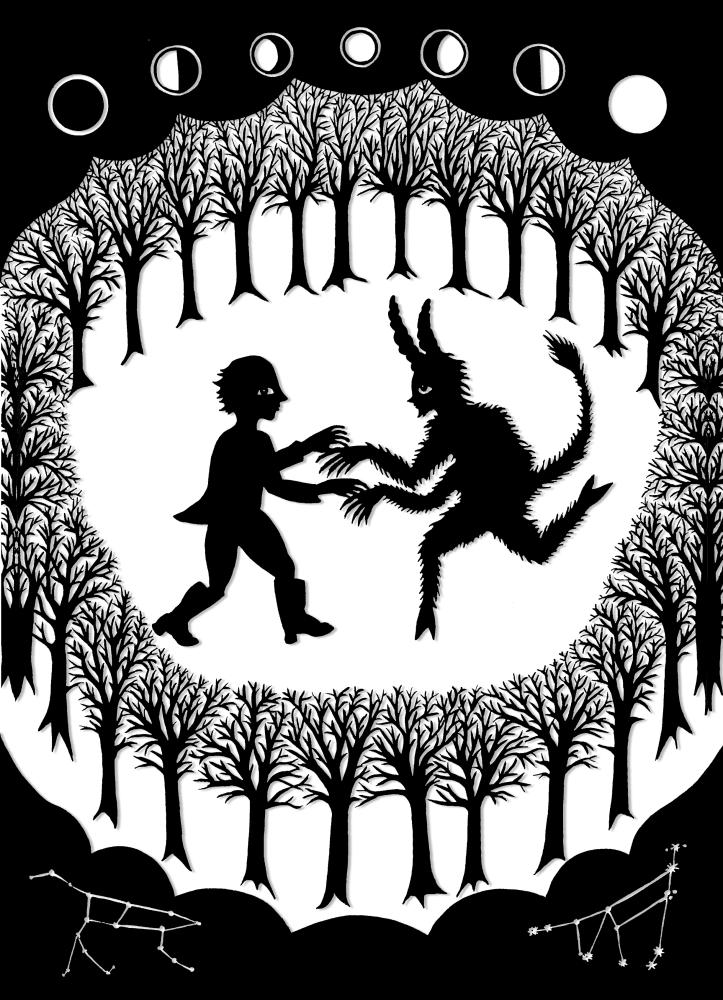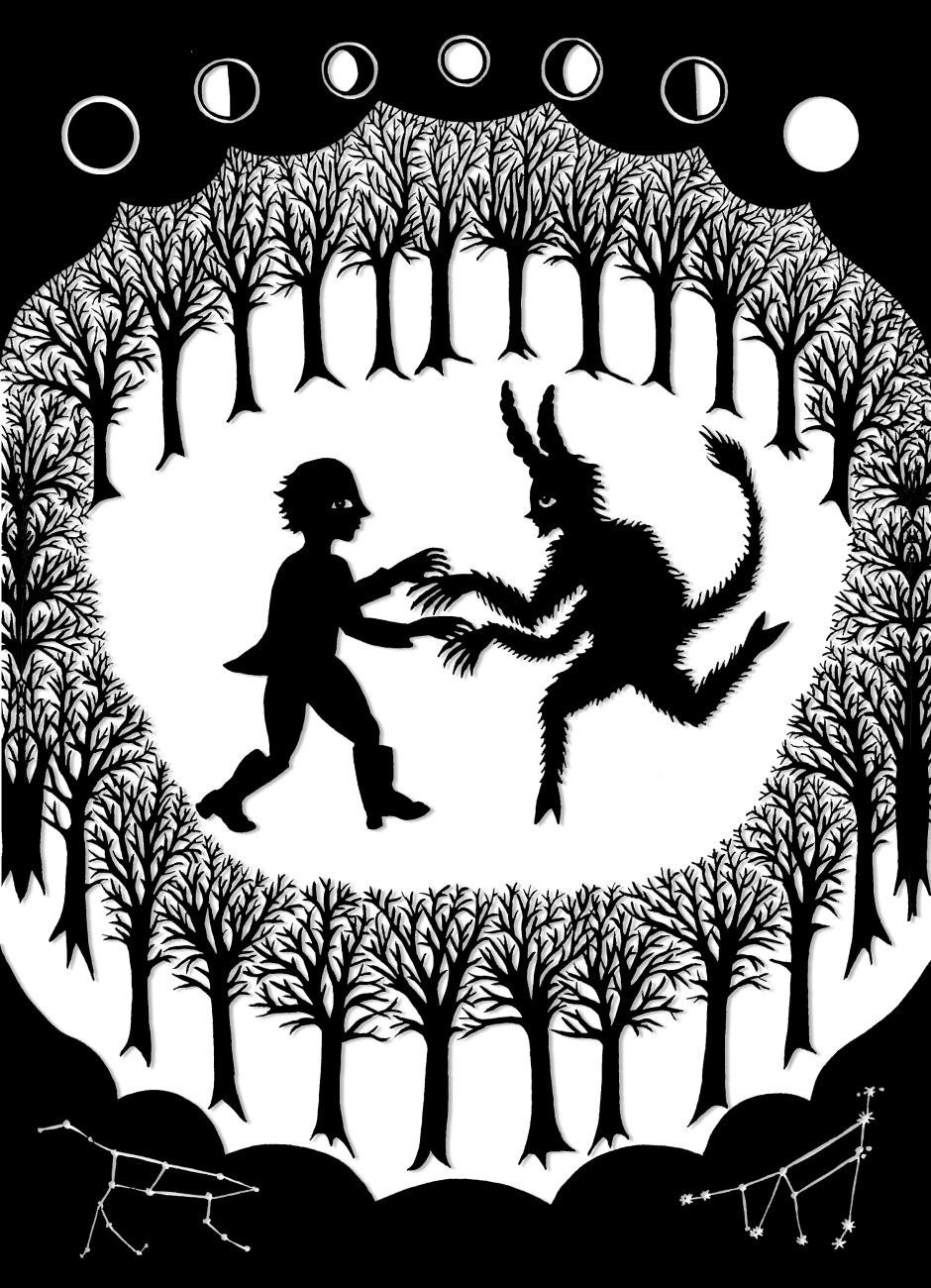Two hundred years ago, two young German librarians by the names of Jacob and Wilhelm Grimm published a collection of tales that would become one of the most influential works of folklore in Germany, Europe, and eventually the world.
Between 1812 and 1857, seven editions of their tales appeared, each one different from the last, until the final, best-known version barely resembled the first. Given that the first edition has recently been honored in bicentenary celebrations throughout the world, it is perhaps a good time to reexamine what we think we know about the original tales of the Brothers Grimm.
The stories the Brothers Grimm first collected are brusque, blunt, absurd, comical, and tragic, and are not, strictly speaking, “fairy tales.” In fact, the Grimms never intended the tales to be read by children. The tales are about children and families and how they reacted to the difficult conditions under which they lived. The Grimms thought the stories and their morals emanated naturally from the German people in an oral tradition, and they wanted to preserve them before the tales were lost forever. In gathering the tales, the Grimms made a unique contribution to folklore, and their Kinder- und Hausmärchen(Children and Household Tales) is even listed by UNESCO in its Memory of the World Registry. It was in large part their first edition, published in two volumes in 1812 and 1815, that inspired folklorists in Europe and Great Britain to gather tales from their oral traditions to preserve as part of their cultural heritage.
This first edition is wholly unlike the so-called definitive edition of 1857. In the process of publishing seven different editions over forty years, the Grimms made vast changes in the contents and style. The stories in the first edition are closer to the oral tradition than the tales of the final, which can be regarded more as a literary collection, because Wilhelm, the younger brother, continually honed the tales so that they would resonate with a growing literary public. Their books would become second in popularity only to the Bible in German-speaking lands. By the twentieth century, they would become the most famous collection of folk and fairy tales in the western world.
When Jacob (b. 1785) and Wilhelm (b. 1786) began collecting folk tales and songs at the beginning of the nineteenth century, they were precocious students at the University of Marburg, still in their teens. They grew up quite fast, plagued by money problems and caring for their siblings—their father died in 1796, leaving the once middle-class family in poverty. Their situation was further aggravated by the rampant Napoleonic Wars. Jacob interrupted his studies to serve the Hessian War Commission, although Wilhelm passed his law exams and found work as a low- paid librarian in the royal library. In 1807, Jacob lost his position with the War Commission, when the French occupied Kassel, but he was then hired as a librarian for the new King Jérome, Napoleon’s brother, who now ruled Westphalia. Amidst all the upheavals, their mother died in 1808, and Jacob and Wilhelm became fully responsible for their three younger brothers and sister.
Despite difficult personal problems and meager financial support from 1805 to 1812, the brothers proved themselves to be innovative scholars in the new field of German philology by publishing articles and books on medieval literature. In fact, they would be surprised to learn that they are more famous today for their tales than for their superb philological studies, which include pioneering work on German sound shifts, and the founding of the voluminous German Dictionary in 1854. But it was their training in philology and the demands that they placed on themselves as researchers that assisted their collecting and editing the tales.
In 1808, their friend, the romantic poet Clemens Brentano, asked them to collect all types of folk tales so he could use them in a book of literary fairy tales. In 1810, they sent him fifty-four texts, which they fortunately copied. Fortunately, because Brentano then lost the manuscript in the Ölenberg Monastery in Alsace and never used the Grimms’ texts. When they realized that Brentano was not going to use the tales, they decided, upon the advice of another romantic writer and mutual friend, Achim von Arnim, to publish their collection. It had grown to eighty-six tales, which they published in 1812, and then another seventy, which they published in 1815.
What compelled the Grimms to concentrate on old German epics, tales, and literature was a belief that the most natural and pure forms of culture—those which held the community together—were linguistic and based in history. According to them, modern literature, even though it might be remarkably rich, was artificial and thus could not express the genuine essence of Volk culture that emanated naturally from experience and bound the people together. Therefore, all their efforts went toward uncovering stories from the past.
In their preface, the Grimms explained their interest in the culture of the common people, and their intention in recording their tales: “It was perhaps just the right time to record these tales since those people who should be preserving them are becoming more and more scarce. . . . Wherever the tales still exist, they continue to live in such a way that nobody ponders whether they are good or bad, poetic or crude. People know them and love them because they have simply absorbed them in a habitual way. And they take pleasure in them without having any reason. This is exactly why the custom of storytelling is so marvelous.” In short, the Grimms’ first collection was shaped as an archaeological excavation and as a book for adults and for scholars. Their tales were not to be classified as children’s stories, not even today.
Although the young Grimms had not entirely formalized their concept of folklore while they worked on the publication of the first edition, they held to their original principle: to salvage relics from the past. They intended to trace and grasp the essence of cultural evolution and to demonstrate how natural language, stemming from the needs, customs, and rituals of the common people, created authentic bonds and helped forge civilized communities. This is one of the reasons why they called their collection of tales an educational manual (Erziehungsbuch), for the tales recalled the basic values of the Germanic people through storytelling. The Grimms wanted to bequeath the oral tales to the German people, not realizing that these tales would assume relevance in all cultures. Though the tales can be considered part of a German nationalist movement in the nineteenth century, they were also related to tales from many other nations, and this relationship accounts for their international appeal today.
Turning to the tales of the first edition, a reader might notice that many of the stories such as “The Hand with the Knife,” “How Some Children Played at Slaughtering,” and “The Children of Famine,” have nothing to do with fairies or happy endings. Instead, these are stark narratives about brutal living conditions in the nineteenth century. For instance, “The Children of Famine” begins this way:
Once upon a time there was a woman with two daughters, and they had become so poor that they no longer had even a piece of bread to put in their mouths. Their hunger became so great that their mother became unhinged and desperate. Indeed, she said to her children, “I’ve got to kill you so that I can get something to eat.”
In another haunting tale, “The Godfather,” a poor man in need of a godfather unknowingly chooses the devil, who may eat him after a visit to the devil’s house of horrors. These tales were omitted in later editions. Some tales, such as “Puss in Boots,” “Bluebeard,” “Princess Mouseskin,” and “Okerlo,” were also omitted because they were con-sidered too French to be included in a German collection. Though it is impossible to clarify fully why certain tales were deleted or placed in footnotes in later editions, we do know that “Death and the Goose Boy” was omitted because of its baroque literary features; “The Strange Feast,” because of its close resemblance to “Godfather Death”; “The Stepmother,” because of its fragmentary nature and cruelty; and “The Faithful Animals,” because it came from the Siddhi-Kür, a collection of Mongolian tales. From the first edition in 1812/1815 to the final one in 1857, the Grimms received numerous versions of tales already in their collection and new tales from strangers, friends, and colleagues, and they often decided to replace one tale with another version, to delete some of the tales, or to include variants in their footnotes.
In contrast to the final 1857 edition, most of the tales in the first edition are shorter and sparser. They have a rawness that was later to be refined. For example, “Rapunzel” is embellished a great deal in the final edition:
First Edition
Once upon a time there lived a husband and wife who had been wishing for a child for many years, but it had all been in vain. Finally, the woman became pregnant.
Now, in the back of their house the couple had a small window that overlooked a fairy’s garden filled with all kinds of flowers and herbs. But nobody ever dared to enter it.
Seventh Edition
Once upon a time there was a husband and wife who for quite some time had been wishing in vain for a child. Finally, the dear Lord gave the wife a sign of hope that their wish would be fulfilled. Now, in the back of their house the couple had a small window that overlooked a splendid garden filled with the most beautiful flowers and herbs. The garden, however, was surrounded by a high wall, and nobody dared enter it because it belonged to a sorceress, who was very powerful and feared by all.
Aside from adding a Christian motif and substituting a sorceress for a fairy, Wilhelm Grimm also concealed a later scene in the first edition when Rapunzel reveals that she apparently had sex with the prince and was impregnated by him. Other differences in the editions show: In the first, Snow White’s mother, not her stepmother, wants to kill the beautiful girl out of envy. The terse tale called “The Wild Man,” in which a mysterious powerful king helps a boy who has helped him escape from a cage, is embellished and transformed into a very long elaborate tale with the title “Iron Hans.” The wild man in the 1812 version is more kind than the stern Iron Hans, who determines the young man’s destiny in a coming-of-age story. Likewise, “The Devil in the Green Coat” is given a new title, “Bearskin,” and a totally new beginning and meaning. In the 1812 tale, the Grimms portrayed an oppressed, timid young man, abandoned in the woods by his brothers. He accepts the devil’s green coat that will enable him to survive for seven years if he doesn’t shave or clean himself. In the much longer 1857 version there are echoes of the Napoleonic wars: The protagonist is a discharged and homeless soldier who is treated poorly by his family and then turns to the devil for survival.
All of the tales in the first edition bear the marks of their diverse storytellers who believed in the magic, superstitions, and miraculous transformations of the tales. It may be difficult for us to understand why this is the case, but for the storytellers and writers of these tales, the stories contained truths about the living conditions of their times. The tales in the first edition were collected not from peasants, as is commonly believed, but mainly from literate people whom the Grimms came to know quite well. Evidence shows that these people often obtained their tales from illiterate or anonymous informants. Even if they did not know their informants, the Grimms came to trust almost everyone who contributed to their collection. It is this mutual trust that marks the tales as something special and endows them with a certain humanity, what Germans call Menschlichkeit, and it is this mutual trust among folklorists in the nineteenth century that marks it as the golden age of folk and fairy tales. The tales in the first edition set a certain standard that collectors began to follow and still follow even today.
Though brusque and raw, the Grimms’ tales of the first edition still resonate with us today because they indicate how we can transform ourselves and our conditions to live in a better world. As philologists, collectors, translators, researchers, editors, and mediators, the Grimms worked in the hope that their tales would benefit us in unimaginable ways, and, indeed, it is this hope that can still be felt when we read and listen to their tales.






